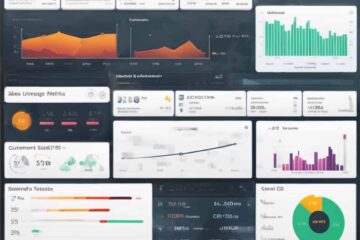You know your customers are the heartbeat of your business, but do you truly understand who they are and where they are located? Building comprehensive customer profiles is important for targeted marketing strategies and personalized customer experiences.
This guide will investigate into the power of mapping software in creating detailed customer profiles that go beyond demographics, helping you visualize their locations, behavior patterns, and preferences.
Follow these step-by-step instructions to unlock the full potential of mapping software and take your customer profiling to the next level. Let’s dive in!
Understanding Customer Profiles
To truly understand your customers, it is crucial to create different types of customer profiles that represent the various segments of your target market. This helps in tailoring your marketing strategies and product offerings to meet the specific needs and preferences of each customer group.
Any comprehensive customer profile should include the following categories.
- Demographic Information: Captures essential details such as age, gender, income, and education to better understand the background of your customers.
- Behavioral Patterns: Analyzes how customers interact with your brand, including their purchasing habits and engagement with your services.
- Geographic Location: Identifies where your customers are located, enabling targeted marketing and location-based offerings.
- Psychographic Information: Delves into the attitudes, interests, and values of customers to comprehend their motivations and preferences.
- Customer Lifecycle Stage: Tracks the progression of a customer’s relationship with your brand, from awareness to loyalty.
- Purchase History: Records past purchases to anticipate future buying behaviors and personalize marketing efforts.
Factors to Consider in Customer Demographics
For a detailed customer profile, it’s crucial to consider various demographic factors that play a role in shaping consumer behavior and preferences. Understanding demographics can provide valuable insights into who your customers are and what drives their purchasing decisions.
Any effective customer profile should take into account the following factors:
- Age
- Gender
- Income level
- Education
- Occupation
Utilizing Mapping Software for Customer Profiles
Sales mapping software is a powerful tool that transforms geographical data into actionable insights for sales teams.
It works by visualizing customer information on a map, enabling sales professionals to see where their customers are located and plan their sales strategies accordingly.
Benefits of sales Mapping Software
- Efficient Data Visualization
- Improved Decision-Making
- Enhanced Segmentation
- Route Optimization
- Increased Productivity
- Cost Savings
- Customer Insights
Beest.app emerges as a standout choice for sales mapping software, offering an intuitive platform that simplifies the process of visualizing and managing customer data geographically.
With its easy-to-use interface and powerful features, Beest.app supports businesses in making data-driven decisions and optimizing their sales strategies.
Now let’s explore some of the key features of effective sales mapping software.
- Geocoding: Converts physical addresses into precise geographical locations, enabling accurate customer mapping.
- Customizable Markers: Allows for the categorization of different customer segments with unique markers, making it easy to identify and analyze.
- Heat Maps: Visualize customer density and activity areas, highlighting potential hotspots for targeted marketing efforts.
- Route Optimization: Facilitates the planning of efficient sales routes to reach customers or prospects, saving time and resources.
- Demographic Overlays: Layer demographic information over your customer locations to gain deeper insights into the characteristics and behaviors of your target market.
Building a comprehensive customer profile through sales mapping software is crucial for tailoring marketing strategies and improving customer engagement, providing a foundation for sustained business growth.
Constructing Customer Profiles: A Step-By-Step Approach
Constructing customer profiles is a pivotal step for businesses aiming to reach their target audience with precision and effectiveness.
Mapping software plays a crucial role in this process, enabling the collection and visualization of valuable data to craft detailed customer profiles.
Here are the steps and tips to guide you through the construction of comprehensive customer profiles using mapping software.
Tips for Accurate Data Collection
- Diverse Data Sources: Ensure accuracy by collecting customer data from multiple sources, allowing for a well-rounded view of your customer base.
- Data Verification: Regularly update and verify your data to maintain its relevance and accuracy, ensuring your customer profiles reflect current trends and behaviors.
- Geolocation Insights: Incorporate geolocation data to gain insights into customer movements and preferences, offering a dynamic layer to your customer profiling.
- Behavioral Tracking: Utilize mapping software to track customer behavior patterns, providing a deeper understanding of how customers interact with your brand across different locations.
Building comprehensive customer profiles with mapping software is a strategic process that enhances targeting and personalization in marketing efforts.
Here’s a breakdown of each step, expanded for clarity and depth.
1. Demographic Analysis
Begin with gathering and analyzing demographic information such as age, gender, income, and education levels.
Mapping software allows you to overlay this data on geographic locations, providing insights into where different demographic groups are concentrated.
This step is crucial for identifying target market segments and understanding their geographic distribution, which can inform more localized and relevant marketing strategies.
2. Behavioral Insights
Next, delve into your customers’ purchasing behavior and preferences.
Utilizing mapping software, you can visualize where certain behaviors and preferences are more prevalent, allowing for a deeper analysis of how geography influences purchasing decisions.
This information is invaluable for crafting personalized marketing messages and offers that resonate with specific customer segments based on their behaviors and geographic location.
3. Location-Based Segmentation
Utilize the powerful segmentation tools of mapping software to categorize your customers based on their geographic location.
This segmentation enables you to develop targeted marketing strategies and personalized outreach efforts that are tailored to the unique characteristics and needs of customers in different areas.
It’s a strategic approach that leverages geographic insights to deliver more relevant and effective marketing campaigns.
4. Continuous Updating
To maintain the relevance and accuracy of your customer profiles, it’s essential to continually update them with new data.
apping software can facilitate the ongoing collection and analysis of customer data, ensuring that your marketing strategies remain aligned with current trends, behaviors, and customer demographics.
Regular updates help in adapting to shifts in customer preferences and market dynamics, ensuring that your business stays ahead in understanding and meeting customer needs.
Maximizing the Benefits of Customer Profiles
Once you’ve developed detailed customer profiles with the aid of mapping software, the next step involves effectively utilizing this wealth of information.
By thoroughly analyzing the gathered data, you can uncover the patterns, preferences, and behaviors characteristic of your target audience. This analysis enables you to customize your marketing strategies, making your communication more personal and enhancing the overall customer experience.
Tailored marketing resonates more with your audience and significantly boosts customer engagement and satisfaction.
Ensuring your customer profiles are continually effective requires regular assessment and readiness to adapt. Keep an eye on key metrics that gauge customer engagement, satisfaction, and conversion rates. Should any data suggest your strategies are not meeting objectives, be agile in refining your customer profiles.
Moreover, integrating customer feedback, conducting A/B tests, and employing analytics tools for a deeper analysis of customer interactions can significantly enrich the process.
This ongoing evaluation and adaptation cycle ensures your customer profiles remain a powerful asset in your business strategy, fostering growth and success.

Final Thoughts | Unlock Your Market’s Full Potential
Embracing the power of comprehensive customer profiles through mapping software is a game-changer for your marketing and customer engagement efforts.
By blending geographic insights with demographic and psychographic data, you unlock a treasure trove of information about your target audience, enabling razor-sharp targeting and personalization in your campaigns.
The result? Skyrocketing customer satisfaction and loyalty that will set you apart from the competition.
This isn’t just an investment in software; it’s an investment in understanding the heart and soul of your market, paving the way for unparalleled business growth.
Don’t let this opportunity slip through your fingers. Invest in top-tier field sales management software today and watch your business soar to new heights.




















